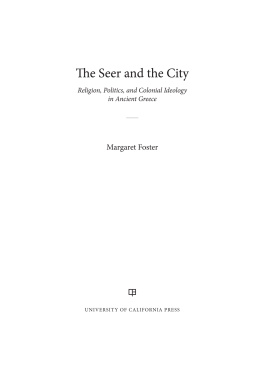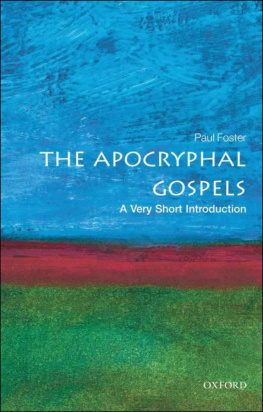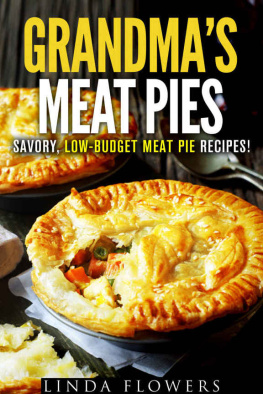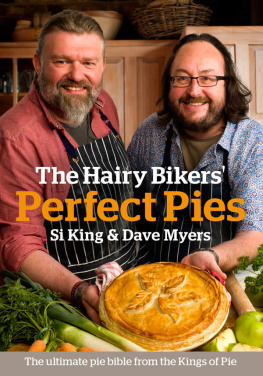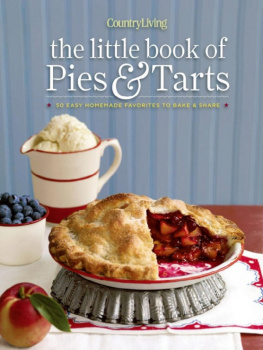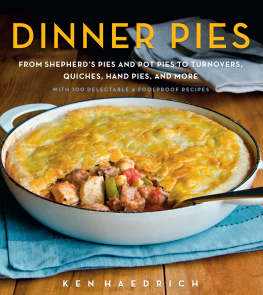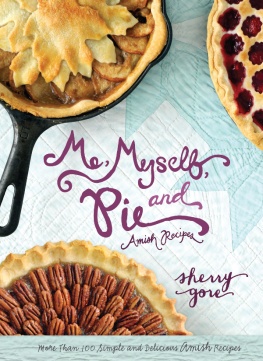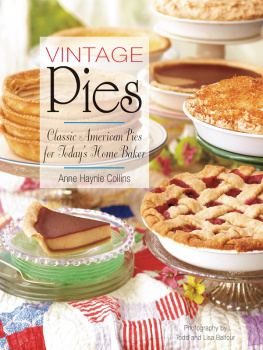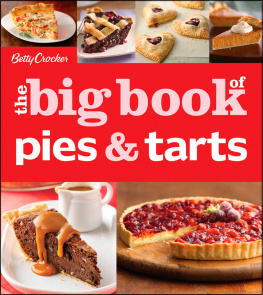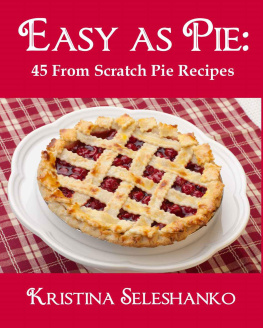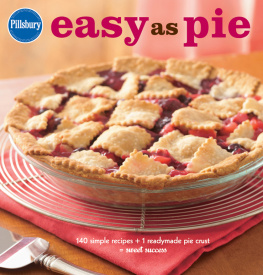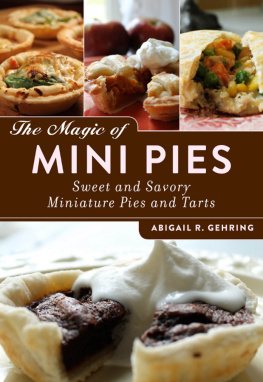Contents
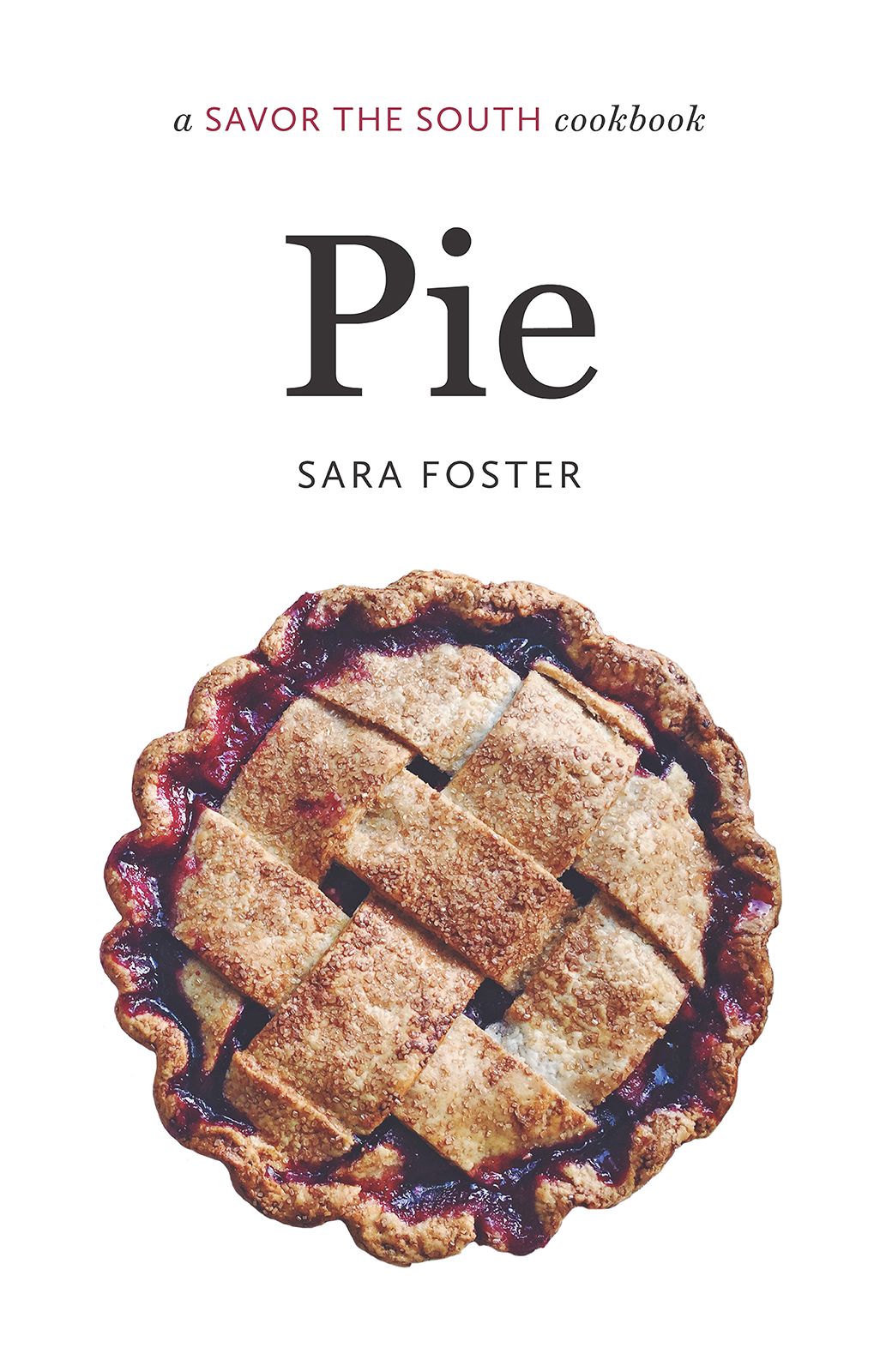

a SAVOR THE SOUTH cookbook
Pie
SAVOR THE SOUTH cookbooks
Pie, by Sara Foster (2018)
Corn, by Tema Flanagan (2017)
Fruit, by Nancie McDermott (2017)
Chicken, by Cynthia Graubart (2016)
Bacon, by Fred Thompson (2016)
Greens, by Thomas Head (2016)
Barbecue, by John Shelton Reed (2016)
Crabs and Oysters, by Bill Smith (2015)
Sunday Dinner, by Bridgette A. Lacy (2015)
Beans and Field Peas, by Sandra A. Gutierrez (2015)
Gumbo, by Dale Curry (2015)
Shrimp, by Jay Pierce (2015)
Catfish, by Paul and Angela Knipple (2015)
Sweet Potatoes, by April McGreger (2014)
Southern Holidays, by Debbie Moose (2014)
Okra, by Virginia Willis (2014)
Pickles and Preserves, by Andrea Weigl (2014)
Bourbon, by Kathleen Purvis (2013)
Biscuits, by Belinda Ellis (2013)
Tomatoes, by Miriam Rubin (2013)
Peaches, by Kelly Alexander (2013)
Pecans, by Kathleen Purvis (2012)
Buttermilk, by Debbie Moose (2012)
2018 Sara Foster
All rights reserved. Manufactured in the United States of America.
SAVOR THE SOUTH is a registered trademark of the University of North Carolina Press, Inc.
Designed by Kimberly Bryant and set in Miller and Calluna Sans types by Rebecca Evans.
The University of North Carolina Press has been a member of the Green Press Initiative since 2003.
Jacket photograph by Keia Mastrianni, maker at Milk Glass Pie.
Library of Congress Cataloging-in-Publication Data
Names: Foster, Sara, author.
Title: Pie : a Savor the South cookbook / Sara Foster.
Other titles: Savor the South cookbook.
Description: Chapel Hill : University of North Carolina Press, [2018] | Series: A savor the South cookbook
Identifiers: LCCN 2018012490| ISBN 9781469647128 (cloth : alk. paper) | ISBN 9781469647135 (ebook)
Subjects: LCSH : Pies. | Cooking, AmericanSouthern style. | LCGFT : Cookbooks.
Classification: LCC TX 773 . F 715 2018 | DDC 641.86/52dc23 LC record available at https://lccn.loc.gov/2018012490
For Jimmy La, a discriminating taster
Contents

a SAVOR THE SOUTH cookbook
Pie
Introduction
WHY DO YOU THINK THEY SAY EASY AS PIE?
In our home, there were basically two types of pies: my mother and sisters favorite, chess pie, and then my fathers and mine, chocolate meringue. Occasionally Aunt June would bring over her specialty, lemon icebox, and Aunt Ann would show up with a caramel pie, just to outdo my mom. I grew up in Tennessee on a farm where the kitchen was the center of our world and something was always cooking on the stove or baking in the oven. Almost every meal ended with a sweet; it could be as simple as a hot biscuit slathered with butter and topped with mashed, sweetened fresh strawberries or a bubbling pie or cobbler coming straight from the oven.
There were many pie makers in our family, mostly women, and no one ever needed a recipethey just mixed, rolled out pastry, and baked to perfection. With this deep, hands-on experience, it seemed as if anyone in our family circle could throw together a pie at the drop of a hat. These were pie recipes that had been passed down from grandmothers, aunts, and cousins, brought over by a neighbor, or shared at the church picnic. Inspired, from an early age I was in the kitchen every chance I got and developed a natural passion for pies. I also learned at a young agewhen my mom got a job at the Fox restaurant in Jackson, Tennessee, and I was introduced to the restaurants coconut cream piethat a whole new world of pies was waiting to be discovered.
After attending culinary school in New York in the 1980s, I started working in restaurants throughout the city. I soon realized my preference for grills and skillets and that I would become, professionally, a cook and not a baker. But this did not mean that I would shy away from baking, of course, which I also loved. And heres the benefit of approaching baking as a savory cook: you think more about seasonality, contrasting flavors and textures and seasoning to taste. A peach pie will take less sugar if you have tree-ripened peaches rather than grocery store peaches that were picked before they ripened. Just as a chef does, think about what each season has to offer thats fresh and ripe: strawberries and rhubarb in the spring; peaches, blackberries, cherries, and figs in the summer; sweet potatoes, pumpkins, apples, and pears in the fall; Meyer lemons, Key limes, Cara Cara oranges, and other citrus in the winter. And when you cant find seasonal ingredients, make anytime pies, with fillings of chocolate, buttermilk, coconut, custard, and nuts.
Even though I chose not to be a pastry chef, I would often be the first to volunteer to make a hundred cherry pies for the catering company I worked with in New York. I made apple pies in our small apartments oven, which could barely accommodate a pie, just because there were so many varieties of apples at the Union Square Greenmarket. With varieties like Idared, Jonagold, Northern Spy, Jersey Mac, and Cortland, it was hard to resist. There was something satisfying about going through the process of rolling and baking that ended with a sense of accomplishment. Making pies is an art anyone can easily master: it is forgiving of imperfection. You can choose to make it sweet or tart to your liking. Make a pie, learn from your experience, and repeat. Forget all those intimidating stories about mastering the art of pastrythis is something easily accomplished with a few attempts at mixing flour, salt, fat, and water. Where do you think the expression easy as pie came from?
Pies are found not only in the kitchen but throughout every part of our southern culture. If Im cooking or baking, the music is playing. I have long heard all about pies in the lyrics of our great southern songwriters, particularly in blues. In his 1930s classic I Want Some of Your Pie, Blind Boy Fuller sings, You gotta give me some of it, you gotta give me some of it, before you give it all away. From that to Bob Dylans Country Pie to the rapper Dominos Sweet Potato Pie, read into it what you want. When it comes to song writing, pie has many meanings.
Curly Weaver, a Georgia blues singer, recorded Fried Pie Blues in 1934If I have any money I will buy me some mmmmmmmmmand one of the most popular songs, recorded by more than twenty other artists, is Hank Williamss 1952 Jambalaya, which includes this line: Jambalaya and a crawfish pie and fil gumbo. Cause tonight Im gonna see my ma cher amio. And who can forget the chorus line from Johnny Cashs 1970s hit Pie in the Sky: There will be pie in the sky, by and by, when I die... and it will be alright, it will be alright.
Ill never forget southern literary master Eudora Weltys short story Kin, in which, on a visit to Mississippi after being away for years, she describes dessert, served at two-thirty in the afternoon, after an enormous dinner,... [a] wonderful black, bitter, moist chocolate pie under mountains of meringue and black bitter coffee. You can almost taste the pie. The scene from the movie adaptation of Kathryn Stocketts 2009 novel




